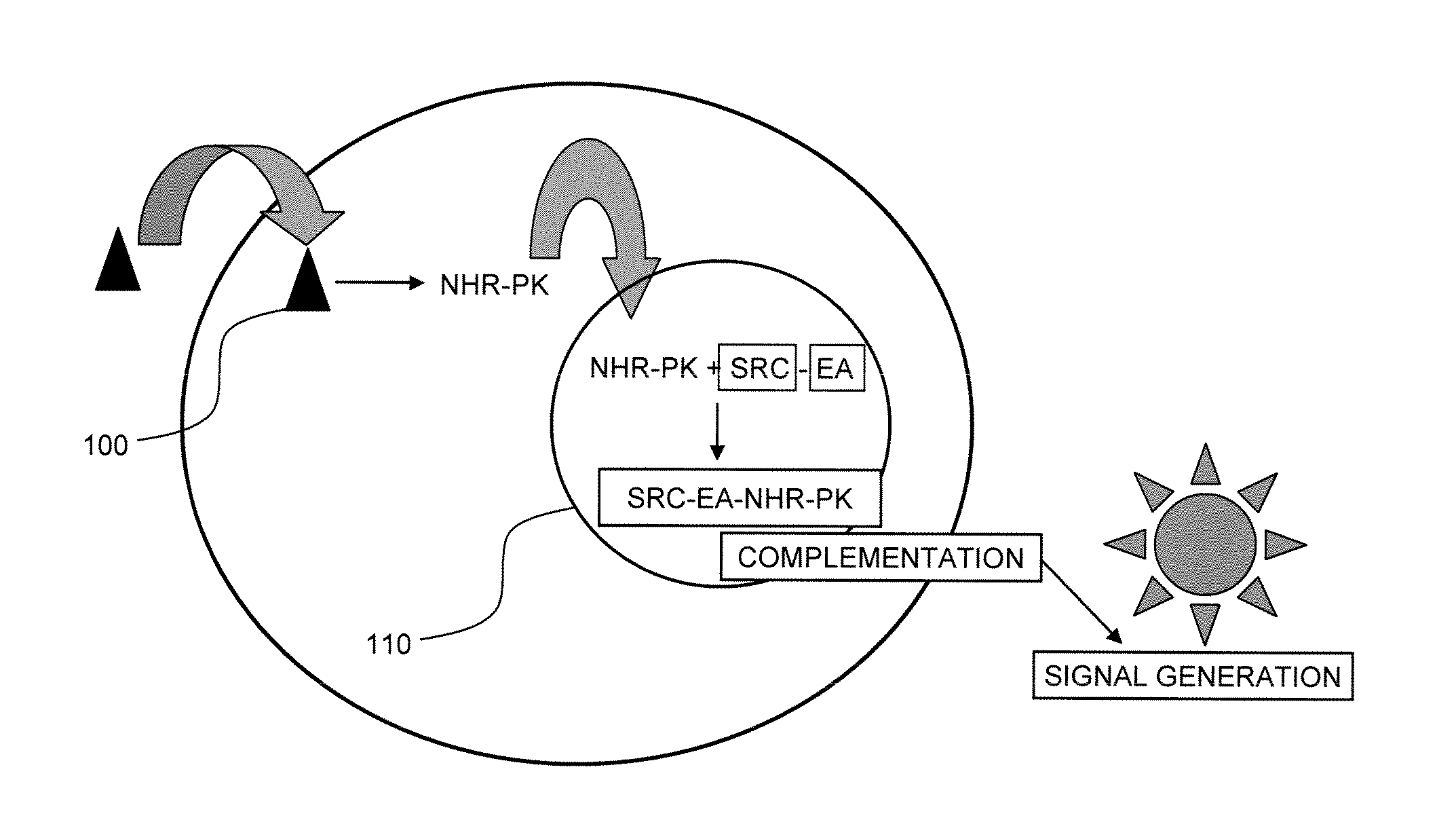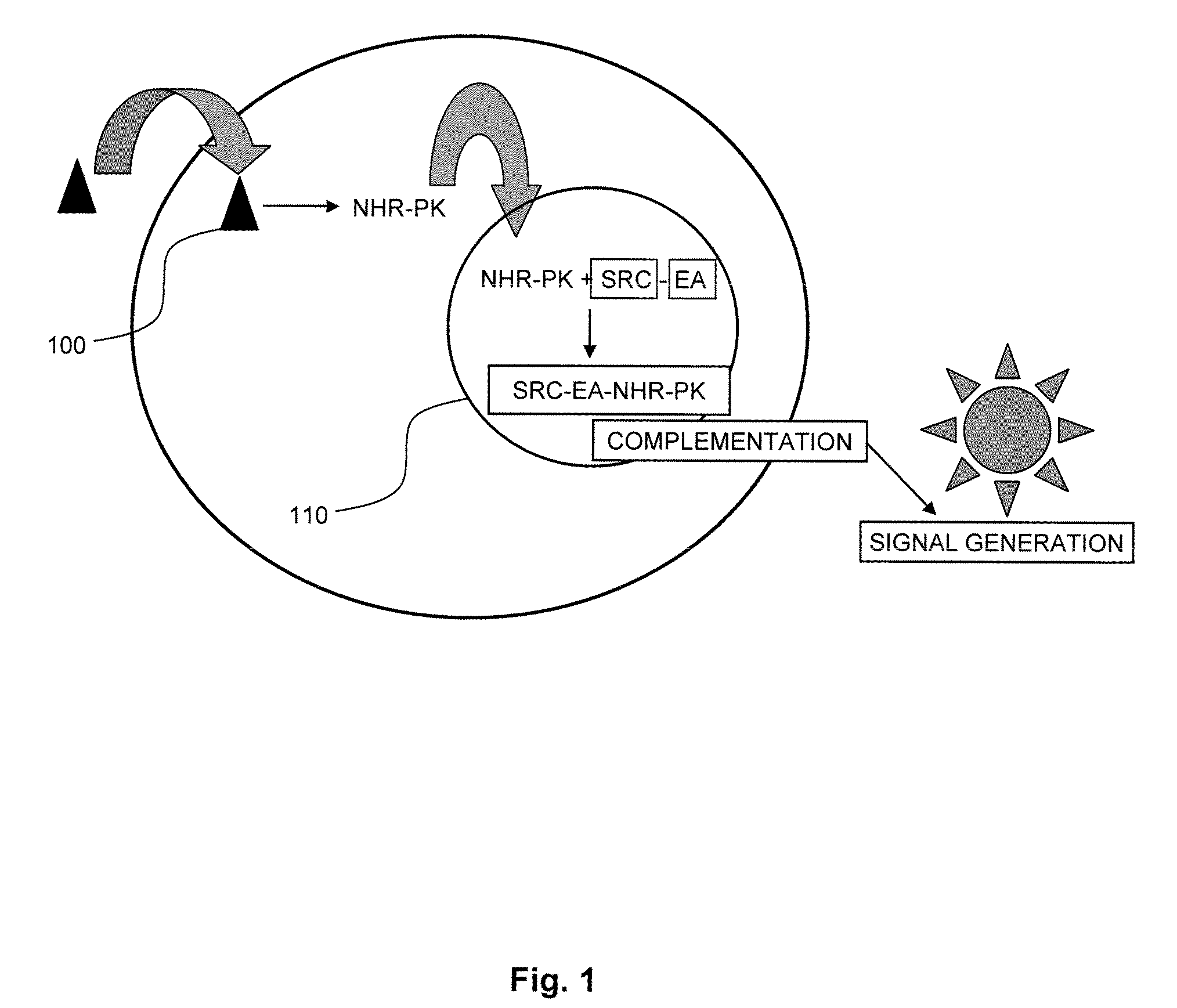Assays for nuclear hormone receptor binding
- Summary
- Abstract
- Description
- Claims
- Application Information
AI Technical Summary
Benefits of technology
Problems solved by technology
Method used
Image
Examples
Embodiment Construction
[0022]Ligands are capable of binding to NHRs and initiating a change in the binding of the NHR to other proteins, usually a second transcriptional co-activator. Generally, agonists will provide for recruitment of a second component, namely a coactivator peptide or another protein member of the transcription factor, e.g., a second NHR to form a homodimer or a different protein to form a heterodimer or binding of the agonist can release a co-repressor that is bound to the NHR. Alternatively, an antagonist will recruit a corepressor to the NHR to inhibit initiation of transcription, block binding of the agonist to the NHR or alter the dissociation of the corepressor. Candidate compounds are screened using enzyme fragment complementation as the system for detection. Genetic constructs are prepared encoding for fusion proteins under the regulatory control of transcriptional and translational genetic signals for expression of the fusion protein in a mammalian host cell. The cells are grow...
PUM
| Property | Measurement | Unit |
|---|---|---|
| Ratio | aaaaa | aaaaa |
| Heat | aaaaa | aaaaa |
Abstract
Description
Claims
Application Information
 Login to View More
Login to View More - R&D
- Intellectual Property
- Life Sciences
- Materials
- Tech Scout
- Unparalleled Data Quality
- Higher Quality Content
- 60% Fewer Hallucinations
Browse by: Latest US Patents, China's latest patents, Technical Efficacy Thesaurus, Application Domain, Technology Topic, Popular Technical Reports.
© 2025 PatSnap. All rights reserved.Legal|Privacy policy|Modern Slavery Act Transparency Statement|Sitemap|About US| Contact US: help@patsnap.com



